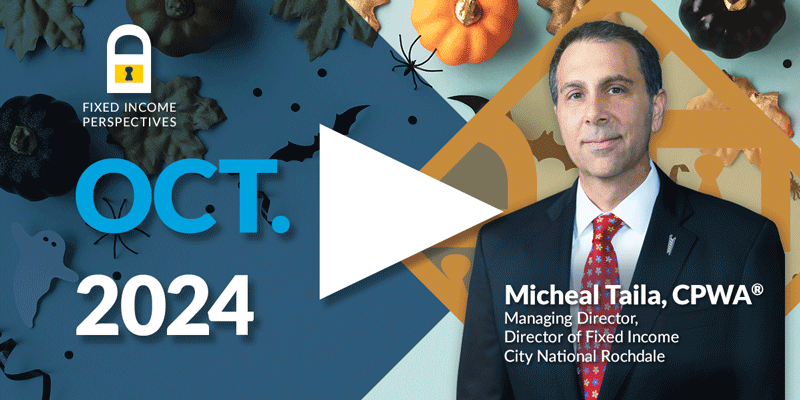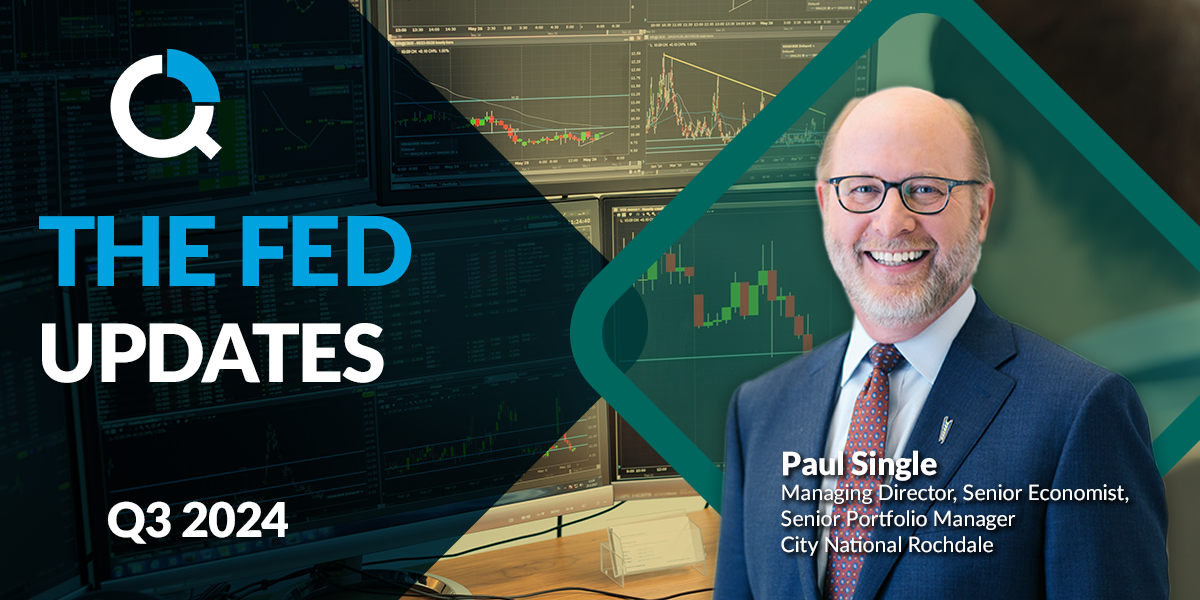

FAQs on the Markets and Economy
What did the Fed decide at its year-end meeting?
The Fed is singularly focused on reducing the rate of inflation.
As a result, the Federal Reserve will raise interest rates higher than previously thought and plan to keep them higher for a longer period to prevent inflation from becoming entrenched in the economy. This will take its toll on labor, as the Fed expects the unemployment rate to increase to 4.6% next year from the present level of 3.7%.
In regard to forecasted interest rate increases of the federal funds rate, the Fed is moving slower but aiming higher. It raised the federal funds rate by 50 basis points (bps) to a median of 4.375%. It is less than the 75 bps hikes of each of the past four meetings. Looking into next year, the Fed plans on another 75 bps hike to a terminal rate of 5.1%, which is higher than its previous forecast of 4.6%. Then in 2024, it plans to cut interest rates by a full percentage point, and the same is planned for 2025 (see chart).

Has inflation turned the corner, heading downward?
For the second month in a row, CPI was shocked by the downside versus market expectations.
November’s Consumer price index (CPI) was 0.1% month over month and 7.1% year over year and the yearly change now stands at the lowest level since last December and 2 percentage points below June’s high of 9.1%. The report was full of good news. The inflation of goods continues to slow as supply chain improvements pass through to lower costs. Service inflation was up a little, but excluding shelter, it was unchanged last month. Energy prices continued to fall (gasoline was down 2%).
Shelter costs are the largest component of CPI, and controlling these costs is needed to bring down overall inflation. Unfortunately, these prices rebounded after slowing down in October. It is keeping inflation for shelter on an upward trend. But under the weight of high mortgage rates, market data for home purchases and rentals has already turned a corner, and price increases are eroding (see chart). The data isn't picked up right away under the current methodology used to calculate this part of CPI, but it should start to show up in the first quarter of 2023.

What’s behind the recent market pullback?
After a strong start to the fourth quarter and continuing signs of moderating inflation, U.S. equities have turned negative again in December amid mounting fears that the Fed’s tightening campaign will go beyond what is necessary and push an already slowing economy into recession.
While we expect better stock and bond returns to eventually take shape in 2023, the recent swings in market sentiment are also a good reminder that history shows that the journey to a Fed pivot could be a volatile one.
With the Fed reaffirming its commitment to reining in inflation, investor attention has begun to focus more on the implications of higher-for-longer interest rates on the economy and corporate profits. For some time, we have argued that earnings estimates would likely have to be lowered to reflect the challenging macroeconomic backdrop and rising recession risk ahead. Although consensus expectations for 2023 have declined over the past couple of months, they remain at a healthy 5.3%, suggesting further downward revisions are likely. In a scenario in which the economy enters a mild recession next year, we would expect earnings growth to stagnate or even contract.
Given this, markets will likely continue to be vulnerable in the near term, and we remain happy with the de-risking steps we’ve made this year, including our overall modest underweight in equities. Earnings revisions in areas we have been emphasizing, such as U.S. dividends and quality stocks, have held up better on a global basis and especially compared to speculative technology stocks.
Bottoming will be a process that could take some time to play out, and further swings in sentiment are likely as investors gain greater clarity on the path for rate hikes and inflation and weigh their implications for the economy and corporate profits. In particular, we suspect further downward earnings revisions could be a catalyst for additional market declines before a sustainable recovery in equity prices can begin.

What is the near-term outlook for investment-grade municipal bonds?
As municipal bond investors anxiously await turning the page on a volatile and challenging performance year, an air of cautious optimism is developing among market participants heading into 2023.
Since November, price gains in investment-grade (IG) municipal bonds of more than 5% potentially signal a shift in the tone of the market, per Bloomberg indices, given more visibility surrounding future Fed policy actions that would seemingly lead to a more constructive technical backdrop for the asset class in the coming months. While IG municipal valuations will fluctuate with the Treasury market and supply–demand dynamics, nominal municipal yields are substantively higher today than a year ago, 175 bps on average across the curve, supporting a more attractive entry point for investors in the new year.
While municipal bond mutual fund redemptions hit a record year to date in 2022 of $115 billion, per Lipper, the magnitude of fund outflows has diminished in recent weeks. We anticipate some improvement, at least through the first half of 2023, as tax loss selling fades and the projected Treasury rate volatility moderates, but continued rotation within the market among mutual funds, ETFs, and institutional and retail is mandated. New‑issue bond supply in the municipal market was lower year over year by nearly 20%, per Bloomberg, contributing to pockets of demand. Seasonal weakness in bond supply should persist through the first quarter of 2023. At the same time, consensus estimates call for muted growth in gross issuance next year, with advance refunding declining but offset by a marginal increase in new project financings (i.e., infrastructure).
Municipal issuer fundamentals benefited over the past two fiscal years from better-than-expected revenue collections and federal stimulus associated with the pandemic that bolstered their overall budgetary positions. Per agency data, rating trends have been mostly positive over the past eight quarters. Still, credit quality is at its cyclical peak, with economic softening and inflationary pressure likely to weigh on issuer operations, albeit unevenly over the near to medium term. Sector and security selection remain critical tenets of successful municipal bond investing, with sound research and analysis helping to support overall portfolio management.

Important Disclosures
The information presented does not involve the rendering of personalized investment, financial, legal or tax advice. This presentation is not an offer to buy or sell, or a solicitation of any offer to buy or sell, any of the securities mentioned herein.
Certain statements contained herein may constitute projections, forecasts and other forward-looking statements, which do not reflect actual results and are based primarily upon a hypothetical set of assumptions applied to certain historical financial infor-mation. Certain information has been provided by third-party sources, and although believed to be reliable, it has not been inde-pendently verified, and its accuracy or completeness cannot be guaranteed.
Any opinions, projections, forecasts and forward-looking statements presented herein are valid as of the date of this document and are subject to change.
There are inherent risks with equity investing. These include, but are not limited to, stock market, manager or investment style risks. Stock markets tend to move in cycles, with periods of rising prices and periods of falling prices.
Investing in international markets carries risks such as currency fluctuation, regulatory risks and economic and political instability.
There are inherent risks with fixed income investing. These may include, but are not limited to, interest rate, call, credit, market, inflation, government policy, liquidity or junk bond risks. When interest rates rise, bond prices fall. This risk is heightened with in-vestments in longer-duration fixed income securities and during periods when prevailing interest rates are low or negative.
Investing involves risk, including the loss of principal.
As with any investment strategy, there is no guarantee that investment objectives will be met, and investors may lose money.
Past performance is no guarantee of future performance.
This material is available to advisory and sub-advised clients, as well as financial professionals working with City National Rochdale, a registered investment advisor and a wholly-owned subsidiary of City National Bank. City National Bank provides investment management services through its sub-advisory relationship with City National Rochdale.
Non Deposit Investment Products are: Not FDIC Insured, Not Bank Guaranteed, May Lose Value
The information presented does not involve the rendering of personalized investment, financial, legal, or tax advice. This presentation is not an offer to buy or sell, or a solicitation of any offer to buy or sell any of the securities mentioned herein.
Certain statements contained herein may constitute projections, forecasts and other forward-looking statements, which do not reflect actual results and are based primarily upon a hypothetical set of assumptions applied to certain historical financial information. Readers are cautioned that such forward-looking statements are not a guarantee of future results, involve risks and uncertainties, and actual results may differ materially from those statement. Certain information has been provided by third-party sources and, although believed to be reliable, it has not been independently verified and its accuracy or completeness cannot be guaranteed.
Past performance or performance based upon assumptions is no guarantee of future results.
Indices are unmanaged and one cannot invest directly in an index. Index returns do not reflect a deduction for fees or expenses.
Any opinions, projections, forecasts, and forward-looking statements presented herein are valid as on the date of this document and are subject to change.
All investing is subject to risk, including the possible loss of the money you invest. As with any investment strategy, there is no guarantee that investment objectives will be met and investors may lose money. Diversification does not ensure a profit or protect against a loss in a declining market. Past performance is no guarantee of future performance.
This material is available to advisory and sub-advised clients, as well as financial professionals working with City National Rochdale, a registered investment adviser and a wholly-owned subsidiary of City National Bank. City National Bank provides investment management services through its sub-advisory relationship with City National Rochdale.
INDEX DEFINITIONS
S&P 500 Index: The S&P 500 Index, or Standard & Poor’s 500 Index, is a market-capitalization-weighted index of 500 leading pub-licly traded companies in the U.S. It is not an exact list of the top 500 U.S. companies by market cap because there are other criteria that the index includes.
Muni Bond: A municipal bond is a debt security issued by a state, municipality or county to finance its capital expenditures, including the construction of highways, bridges or schools. These bonds can be thought of as loans that investors make to local govern-ments.
Bloomberg Barclays U.S. Corporate High Yield Bond Index: measures the USD denominated, high-yield, fixed-rate corporate bond market.
Dow Jones Select Dividend Index: The Dow Jones U.S. Select Dividend Index looks to target 100 dividend-paying stocks screened for factors that include the dividend growth rate, the dividend payout ratio and the trading volume. The components are then weighted by the dividend yield.
CBO: A collateralized bond obligation (CBO) is a type of structured debt security that has investment-grade bonds as the underlying assets backed by the receivables on high-yield or junk bonds.
Moody’s: Moody’s Corporation (MCO) is the holding company that owns both Moody’s Investors Service, which rates fixed income debt securities, and Moody’s Analytics, which provides software and research for economic analysis and risk management. Moody’s assigns ratings on the basis of assessed risk and the borrower’s ability to make interest payments, and its ratings are closely watched by many investors.
Penn Wharton Budget Model: Penn Wharton Budget Model’s (PWBM) tax policy simulator allows policymakers, members of the media, and the general public (“users”) to see the impact that potential reforms to tax policy will have on many the economy and the federal budget.
NDMC: National Drought Mitigation Center (NDMC) The National Drought Mitigation Center’s mission is to reduce the effects of drought on people, the environment and the economy by researching the science of drought monitoring and the practice of drought planning.
NOAA: The National Oceanic and Atmospheric Administration (NOAA) is an American scientific and regulatory agency within the United States Department of Commerce that forecasts weather, monitors oceanic and atmospheric conditions, charts the seas, conducts deep sea exploration, and manages fishing and protection of marine mammals and endangered species in the U.S. exclusive economic zone.
USDA: The United States Department of Agriculture (USDA) is the federal executive department responsible for developing and executing federal laws related to farming, forestry, rural economic development, and food.
The SIFMA Municipal Swap Index: The Securities Industry and Financial Markets Association Municipal Swap Index is a 7-day high-grade market index comprised of tax-exempt Variable Rate Demand Obli-gations (VRDOs) with certain characteristics. The Index is calculated and published by Bloomberg. The Index is overseen by SIFMA’s Municipal Swap Index Committee.
CalPERS: The California Public Employees’ Retirement System, also known as CalPERS, is an organization that provides numerous benefits to its 2 million members, of which 38% are school members, 31% public agency members, and 31% state members.
4Ps: The 4P analysis is a proprietary framework for global equity allocation. Country rankings are derived from a subjective metrics system that combines the economic data for such countries with other factors including fiscal policies, demographics, innovative growth and corporate growth. These rankings are subjective and may be derived from data that contain inherent limitations.


